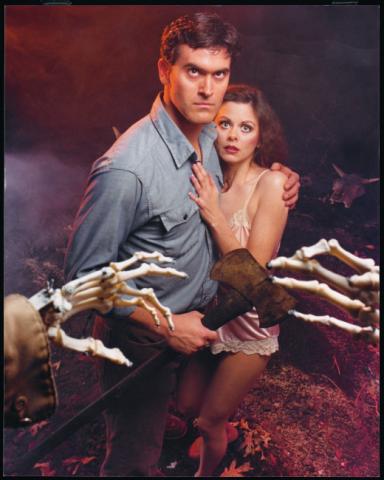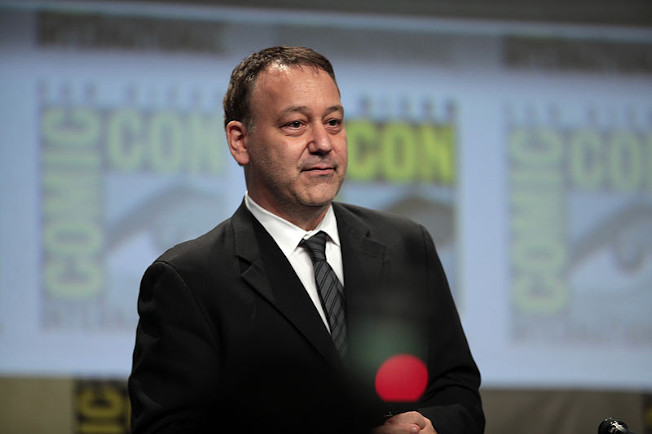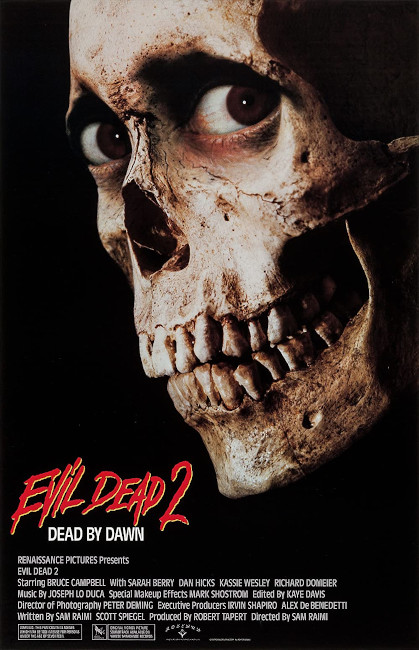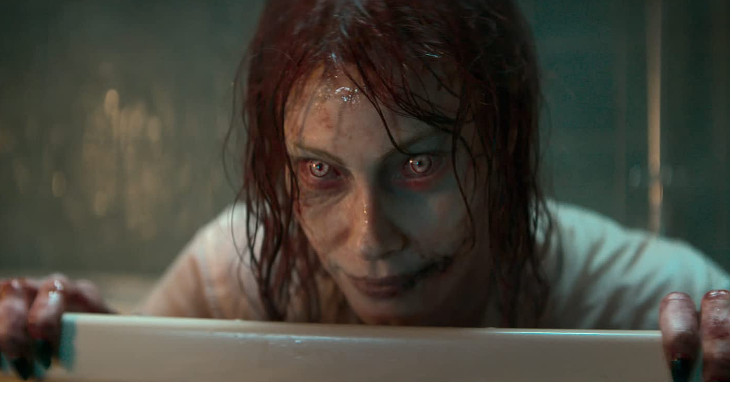The Evil Dead: How the Indie Horror Film Became a Groovy, Gory Sensation

Born a showman, Sam Raimi’s gleefulness for the absurdist nature of violence and gore proved to be a winning combination. As a kid growing up in the suburbs of Detroit, his love of magic tricks, The Three Stooges, and theater may have not made him the most popular kid; however, these interests proved a helpful tool in his filmmaking. In 1975, while attending Groves High School in Beverly Hills, Michigan, the young filmmaker befriended Bruce Campbell, who became a frequent collaborator with Raimi and went on to star in The Evil Dead franchise. Together, the two filmed short Super-8 movies together resulting in 1978’s 30-minute film entitled, Within the Woods, which served as the inception for the first Evil Dead installment.

Had you told Raimi and Campbell the success and controversy The Evil Dead would cause upon its release in 1981, the two young men would never have believed you. Young, brash, and a bit too juvenile for his own good, Raimi admits that he cared little about censorship, instead allowing every over-the-top, bloody, and deranged idea imaginable to stay put in the final edit. Images of pencil stabbings, cannibalism, eye gouging, and gallons upon gallons of blood splattered everywhere on the screen made The Evil Dead a gory film with no sense of morals and decency.
In 1981, the film’s release in the U.K. caused a moral panic spearheaded by Mary Whitehouse, founder of the conservative group, National Viewers’ and Listeners’ Association. Whitehouse viewed The Evil Dead as a “video nasty” a term coined to describe several other low-budget horror films as dangerous and threatened Raimi and the film’s distributors with prosecution charges under British obscenity laws. Due to these controversies along with its X rating, The Evil Dead gained notoriety with many countries banning the film outright.

Whitehouse’s righteous indignation only worked in the film’s favor. Her outrage over “video nasties” and their illicit content offered free advertisement to these films and in doing so ensured kids would seek them out. Her actions helped create one of the most famous and successful cult films ever made. Rumors of the behind-the-scenes production and terror the cast was subject to while filming circulated upon its release to home video creating a mythos that surrounded the project.
Raimi’s amateurish filmmaking worked to the movie’s advantage. His do-it-yourself style of directing and special effects allowed the film to be made on a shoestring budget with the help of his friends and his brothers Ted and Ivan. Whereas filmmakers are often keenly aware of their financial limitations, Raimi never allowed his budget to get in the way of his ambition. The Evil Dead spares no expense in its scope. One of the bloodiest films of all time, Raimi relishes covering his leading man in gallons of fake blood made from a combination of Karo syrup, non-dairy creamer, and red food coloring. In the final shot, the protagonist Ash Williams is soaked from head to toe in blood, adding to the cartoonish gore of the film.

The ingenuity of The Evil Dead’s approach to special effects made the film unique. Raimi’s use of frenzied camera motions and first-person perspective made the camera a character within the franchise. Often, the film’s perspective is that of the demon creating a sense of disorientation and escalating the overall sense of atmospheric horror present within the cabin. Thus, any change to the stability of the camera makes the foes omnipresent, as if the demon is stalking its prey.
Films such as 1973’s The Exorcist and 1974’s The Texas Chainsaw Massacre are evidence that audiences embraced the insidious and disturbing nature of horror films far before Raimi came along. What made his work unique was his infusion of humor at the center of his horror. Raised on The Three Stooges, Raimi took inspiration in beating down his protagonist. Like the Stooges, Ash is constantly beaten up, knocked around, and experiences great physical harm both in front and behind the camera, much to the audience’s amusement.

As the series progressed, Raimi relied heavily on Campbell’s natural comedic timing; thus the series became a blend of pseudo-horror comedy. With each iteration, Ash became far more comedic in tone. By the time Army of Darkness was released in 1992, the franchise had become full tongue-in-cheek. Yet, this silliness worked to the franchise’s benefit.
Widely regarded as one of the greatest horror sequels of all time, Evil Dead II (1987) serves as both a remake and sequel to the original film. Granted a much larger budget, Raimi places further emphasis on blood, special effects, and humor. Where Ash was hapless, albeit a good-natured man in the first installment, Evil Dead II transforms Ash into a parody of an Arnold Schwarzenegger character. Far more macho, full of quippy one-liners, and a bit too full of himself, Ash is far more capable of handling danger than his previous iteration. The goofy, irreverent humor made the over-the-top violence further palpable to audiences, and in doing so, catapulted Raimi into true horror stardom.

With the release of Evil Dead Rise, director Lee Cronin proves that if the formula is not broken, why fix it? Quite possibly the bloodiest studio film ever made, the fifth installment within the franchise gleefully takes the reigns from Raimi and continues in his tradition of covering his actors in gallons of blood. Yet, where so many modern horror films use computer-generated effects as a shortcut, Cronin understands the do-it-yourself craftsmanship is what makes The Evil Dead such a fan favorite. The camera is first and foremost a character within the film. The humor is as devilish as ever. But maybe, most importantly, Evil Dead Rise is chock-full of the same over-the-top gore that seems both deeply unsettling while maintaining the same Sam Raimi irreverence that has kept this franchise feeling fresh for four decades.
Author Bio:
Ben Friedman is a freelance film journalist and a contributing writer at Highbrow Magazine. For more of his reviews, visit bentothemovies.com, his podcast Ben and Bran See a Movie, or follow him on Instagram, Twitter, and YouTube: The Beniverse
For Highbrow Magazine
Image Sources:
--Gage Skidmore (Wikimedia, Creative Commons)




























































































































































































































































































































